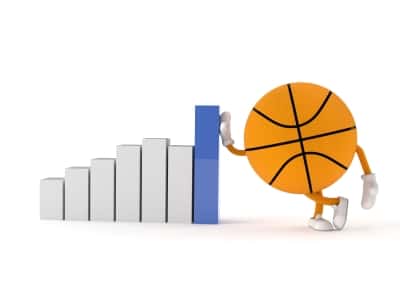The analytics profession has grown substantially with the advent of new technologies and the integration of powerful statistical software. Across the profession we now see Business Analysts, Risk Analysts, Healthcare Analysts, and Web Analysts to name a few. While the context of the content being analyzed differs, by-and-large the math that is used remains the same. Statistical tests can be carried out on any vast amount of data.
Performance analytics is an important field and its calculations can be used across many professions. After proper data collection, formulas and algorithms can be generated to improve businesses, e-commerce websites, and insurance companies (again, only a few examples here). While these professions may seem like all work and no play, there is one emerging field that can combine one’s data analysis profession with interests outside of the office.
Sports performance analytics is a relatively new field that should see a large growth in the coming years. Simple performance analysis tests that are typically applied in business analytics can also be used to evaluate and enhance how the professional sports industry develops and improves team performance.
While most of us may be familiar with the type of data analysis known as sabermetrics, as portrayed in the movie Moneyball, sports performance analytics is by no means confined to the sport of baseball. Take basketball, for example, for which the analysis of collected stats is called APBRmetrics. Complex formulas and algorithms can be employed to calculate offensive and defensive efficiency ratings for both individual players and teams. Using these formulas, players are awarded a score based on how many points they average per 100 possessions. This metric was developed by basketball stat guru Dean Oliver who currently heads Production Analytics at ESPN. It can be used as a way to determine how easily players will transition from college to the professional level. Defensive efficiency ratings can also be calculated, and leveraged with concurrent offensive ratings. Furthermore, collected stats can be examined at both the per-game and per-possession level.
Delving deeper, logistic regression analysis can also be used to effectively determine which stats (rebounds, steals, points, etc.) are most significantly associated with winning. This statistical test attaches a percentage to each stat. These percentages can be interpreted as a percent increase in the odds of victory (or any other binary outcome) with every one unit increase of each stat examined. Analyses can be conducted at both the team and the individual level. Using this data, team statisticians work closely with coaching staffs to ensure that the right roster combination is on the floor at the right time. These analyses can encompass an entire game, or can be narrowed down to halves, quarters, teams, or even specific situations to maximize efficiency.
ANOVA analysis can later be carried out to determine where a significant difference in the mean of any recorded stat is occurring. For example, let’s say that the logistic regression analysis shows that for the Denver Nuggets, rebounds are most highly associated with winning. Analyzing the Nugget’s many roster combinations from the previous year, it is possible to determine which roster combinations perform at a level that is statistically, significantly greater than the team mean. While this may sound like an easy task, take into account that during the 2012-2013 NBA season, the Nuggets put upward of 200+ roster combinations on the floor. Using a statistical package such as SAS or R, this test can be accomplished by the click of a button.
APBRmetrics is in no way limited to the aforementioned tests. Simple correlation analyses are useful and basic SQL queries can help narrow down large datasets into more meaning subsets.
The field of data analysis is rapidly growing to the point where even people with limited backgrounds are collecting and analyzing data. Products such as Fitbit, Nike+ FuelBand, and pedometers allow anyone to track and analyze their own performance. Analysts with a solid foundation in mathematics can direct their interests to whatever field they desire. Sports performance analytics can be both fun and practical. At the very least, you might be able to beat your friends in fantasy football.
